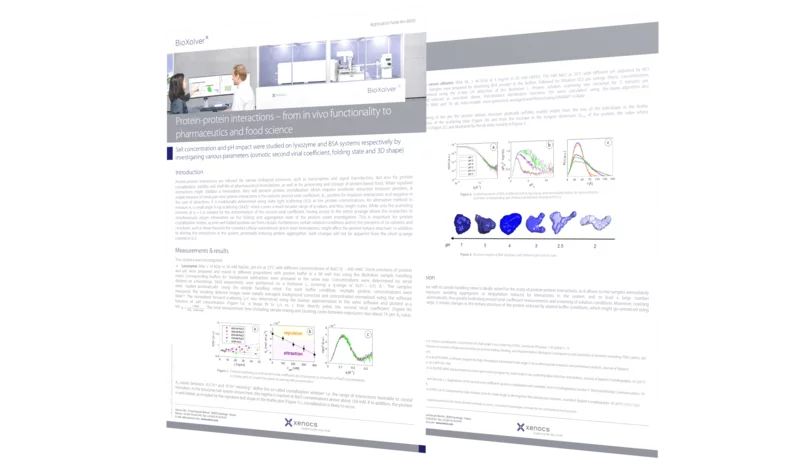Salt concentration and pH impact were studied on lysozyme and BSA systems respectively by investigating various parameters (osmotic second virial coefficient, folding state and 3D shape).
Introduction
Protein-protein interactions are relevant for various biological processes, such as transcription and signal transduction, but also for protein crystallization, stability and shelf-life of pharmaceutical formulations, as well as for processing and storage of protein-based food. While repulsive interactions might stabilize a formulation, they will prevent protein crystallization which requires oderate attraction between proteins. A simple measure of weak pair-wise protein interactions is the osmotic second virial coefficient, A2, positive for repulsive interactions and negative in the case of attractions. It is traditionally determined using static light scattering (SLS) at low protein concentrations. An alternative method to measure A2 is small angle X-ray scattering (SAXS)1 which covers a much broader range of q-values, and thus length scales.
While only the scattering intensity at q = 0 is needed for the determination of the second virial coefficient, having access to the entire q-range allows the researcher to simultaneously obtain information on the folding and aggregation state of the protein under investigation. This is important for protein crystallization studies, as only well folded proteins can form crystals. Furthermore, certain solution conditions and/or the presence of co-solvents and co-solutes, such as those found in the crowded cellular environment and in most formulations, might affect the protein tertiary structure2 in addition to altering the interactions in the system, potentially inducing protein aggregation. Such changes will not be apparent from the short q-range covered in SLS.


































